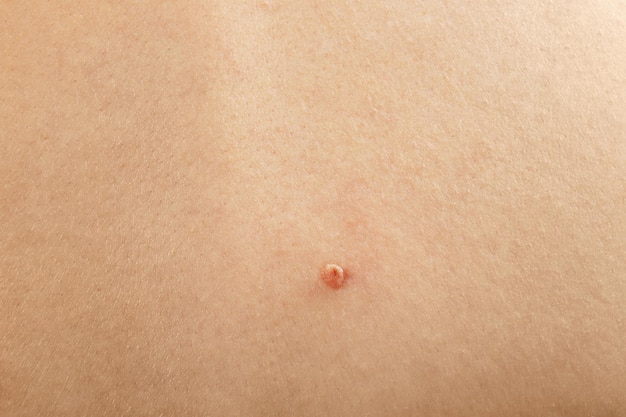
Introduction
Birthmarks, those unique skin features, have intrigued humans for centuries. They can come in various shapes, sizes, and colors, making them a topic of curiosity and, sometimes, concern. In this article, we will embark on a journey to uncover the mysteries surrounding birthmarks, exploring when they appear, what causes them, and whether they hold any significance.
Understanding Birthmarks
Before delving into when birthmarks appear, let’s first understand what they are. Birthmarks are benign irregularities on the skin that manifest in various forms. These intriguing markings can appear anywhere on the body and affect people of all ages. They often leave individuals wondering about their origins and meanings.
Types of Birthmarks
- Vascular Birthmarks: These birthmarks result from irregularities in blood vessels. They include hemangiomas and port-wine stains.
- Pigmented Birthmarks: These birthmarks are caused by an overproduction of pigment in the skin and include moles and café-au-lait spots.
- Congenital Moles: These are raised, brown, or black moles present at birth or appearing shortly after.
- Salmon Patches: Often referred to as “angel kisses” or “stork bites,” these are flat, pink patches typically found on the forehead, eyelids, or back of the neck.
When Do Birthmarks Appear?
The timing of when birthmarks appear can vary greatly depending on the type.
Vascular Birthmarks
- Hemangiomas: These appear shortly after birth, often during the first or second week of life. They tend to grow rapidly during the first six months before gradually shrinking.
- Port-Wine Stains: Unlike hemangiomas, port-wine stains are present at birth and remain throughout life. They may darken and thicken over time.
Pigmented Birthmarks
- Moles: Moles can appear at any time in life, but many are present at birth or develop during childhood and adolescence.
- Café-au-Lait Spots: These light-brown birthmarks are often present at birth but can develop in early childhood. They tend to fade with age.
Congenital Moles
Congenital moles are, as the name suggests, present at birth. They may vary in size and color, and some can even grow or change over time.
Salmon Patches
Salmon patches are typically present at birth and may become more noticeable when a baby cries or becomes upset. Fortunately, they usually fade as the child grows older.
What Causes Birthmarks?
The exact causes of birthmarks remain a subject of ongoing research. However, there are some prevailing theories:
- Genetics: Some birthmarks may be hereditary, passed down from one generation to the next.
- Blood Vessel Abnormalities: Vascular birthmarks like hemangiomas are thought to result from abnormal blood vessel development in the womb.
- Melanin Production: Pigmented birthmarks are linked to the overproduction of melanin, the pigment responsible for skin color.
The Significance of Birthmarks
Birthmarks, in most cases, are harmless and do not require medical attention. However, they have held cultural significance and superstitions in various societies. Some believe birthmarks are a mark of distinction or even a sign of past life experiences.
Conclusion
In conclusion, birthmarks are unique skin features that can appear at various stages of life, depending on their type. While they might pique our curiosity, they are usually harmless. Understanding when birthmarks appear, what causes them, and their significance can help demystify these intriguing skin markings.
Frequently Asked Questions
- Can birthmarks be removed? Yes, some birthmarks can be removed or lightened through medical procedures such as laser therapy or surgery.
- Are birthmarks permanent? Many birthmarks, such as port-wine stains, are permanent. Others, like salmon patches, often fade with time.
- Do birthmarks change in appearance over time? Some birthmarks, like congenital moles, can change in size and appearance over the years. Regular monitoring is essential.
- Are there any health risks associated with birthmarks? Most birthmarks are harmless, but in rare cases, they may indicate an underlying medical condition. Consult a dermatologist if you have concerns.
- Can birthmarks be a sign of a past life? While some cultures believe in this theory, it remains a matter of personal belief and not scientific evidence.
Remember, birthmarks are as unique as the individuals who bear them, adding character and intrigue to our diverse tapestry of human existence.
